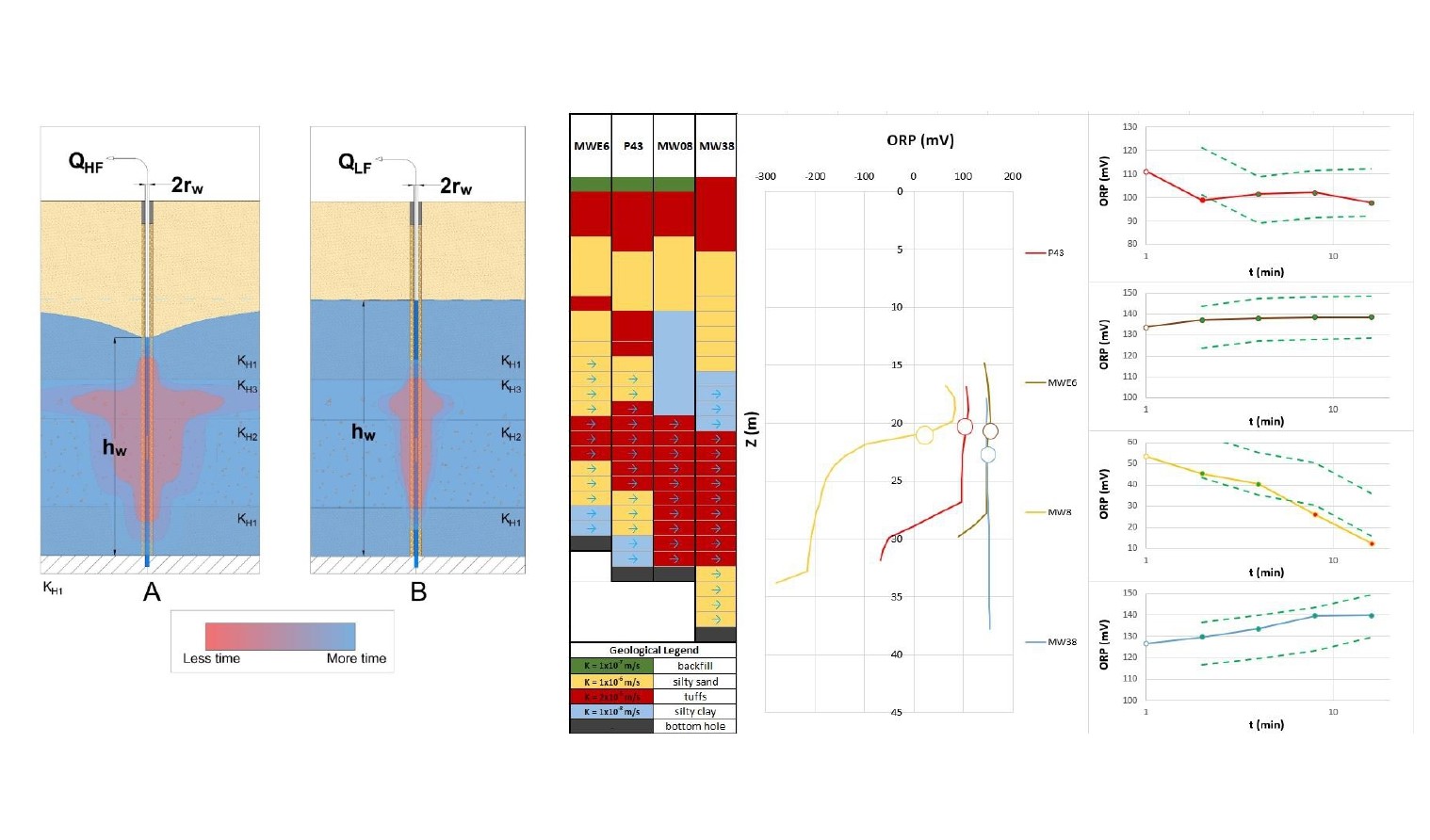Groundwater sampling in potentially contaminated sites: a new quali-quantitative approach

The remediation activities for a contaminated site are the more targeted (effective and cheaper at the same time) the higher is the spatial resolution of the hydrogeological parameters necessary for the characterization of the site. Hydraulic conductivity plays a key role, especially in the case of alluvial soils, which often host multi-layered or modestly sized aquifers. During the purging procedures of the wells related to a groundwater monitoring network, only the chemical-physical parameters are normally checked, to determine the start of the sampling procedure. The new qualitative-quantitative approach, introduced by Professor Sappa and Dr. De Filippi from DICEA-ICI, proposes to also use groundwater level data (easily measurable) during the procedure. Since the purging and sampling are carried out using low flow pumps (0.1 – 1 L/min), to avoid the displacement of contaminants from one point to another, the stress imposed on the aquifer is limited, as well as drawdowns and for a rather wide range of variability it is possible to use the collected data to estimate the hydraulic conductivity of the soils in the monitoring point. This procedure allows to obtain a greater spatial resolution of the parameter, with the effect of providing a more solid database for the subsequent modeling of the site, avoiding further investigations and reducing times and costs for stakeholders.
In the case of high heterogeneity of the soils along well screen, the qualitative characteristics of the groundwater sample collected will be the product of a sampling weighted on the different permeabilities of the aquifer strata involved during the pumping. This factor could delay the entire procedure, compromising the accuracy of the methodology and providing samples with different characteristics as the position of the pump varies along the well. A possible solution to this is the execution of multiparametric logs in the wells prior to sampling. This can be useful for detecting the position and thickness of the low permeability layers (indicated by a sudden variation of specific water chemical-physical parameters) in order to limit and control its effects during purge and sampling operations and ensure the reliability of the proposed estimation methodology.
More info: https://www.mdpi.com/2306-5338/10/1/12#metrics




